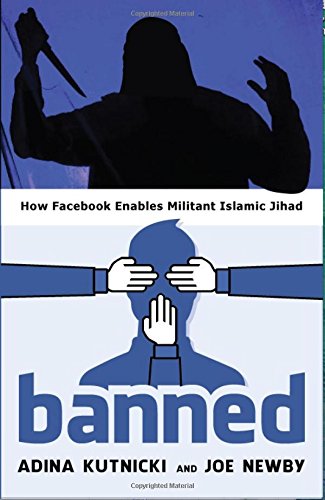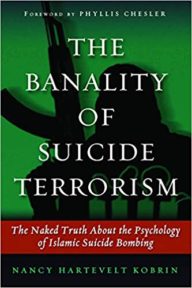
Naming Names: The Architects of Our Present Disaster…
UNARGUABLY, it is due to the prescience (and brilliance) of America’s Founding Fathers that the underpinnings of the greatest experiment in human liberty and freedom was born. Birthed as a Constitutional Republic (in contrast to a democracy), the U.S. became a national beacon for hope and light within a sea of worldwide darkness and despair. Let’s just admit to said truths and proceed from there.
THAT being established, yesteryear’s (Presidential) arsonists — along with like-minded self-appointed elitists — must be traced back, that is, in order to correctly analyze and internalize the nation’s fracturing, and, ultimately, its disintegration. Consider their decades-long, insidious mischief-making as knock-on effects, thus, reverberating until this day. Climaxing. Indeed, coupled with continuous force multiplier hammer-blows, America is now on the precipice.
AS a precursor to the above analysis, the following was reported herein on Nov. 11, 2018. Beforehand, alike. As excepted,
In order to fully comprehend and internalize the horrifying, yet, seemingly inexplicable dynamics behind the unassailable metamorphosis of America, it is imperative to become familiar with the core goal of the puppet-masters – as they grasp the nation’s (collective) throat into a final choke-hold. Sans a scintilla of a doubt, their absolute fealty to the red-green alliance is the overarching impetus behind the nexus thereof. Resultant, one side acts as a force-multiplier for the other. Full-throated.
In this respect, and before we delve any further, the foundational groundwork for the national transformation into the “Socialist States of America” must be laid bare, as well as made inordinately clear: it was uber elitist Woodrow Wilson, the 28th President of the United States, who initiated the Executive train – straight into the ever-lurking arms of socialists/Marxists/communists! Indeed, a betrayal of monumental proportions. Incontestably, it was a treasonous violation, for he (alongside too many others, in the intervening decades) swore to uphold the Constitution! … continue on to the treacherous details here …
IN keeping with all of the above, let the following devastating truths ring in every patriot’s heart and ears — how we came from there to here.
♦ ♦ ♦ ♦
AMERICAN GREATNESS | By Benjamin Braddock | March 14, 2022
—William Butler Yeats, “The Second Coming”
Turning and turning in the widening gyre
The falcon cannot hear the falconer;
Things fall apart; the centre cannot hold;
Mere anarchy is loosed upon the world,
The blood-dimmed tide is loosed, and everywhere
The ceremony of innocence is drowned;
The best lack all conviction, while the worst
Are full of passionate intensity.
The center is not holding, things are falling apart. We have moved on from mass psychosis over vaccines to mass psychosis over the urgent need to go to war with Russia.
The sanctions are bad enough; the early economic fallout from them is already causing pain for working and middle-class Americans. But we did sanctions last week, the public demands more. Do something, even if that thing is horrifying in its implications. Two years of pent-up dissociated rage is being channeled and redirected at an external target by the same people responsible for the response to COVID-19, among the worst atrocities in American history.
Americans of Russian descent—the vast majority of whom have no association with Putin or the Russian state, not that their mistreatment would be justified if they did—are bearing the brunt of a particularly vicious campaign of racial hatred and attacks. Quite the contrast to the early days of COVID when liberals were tripping over themselves to get to their nearest Chinese restaurant to prove that racism was the real virus. Joe Biden couldn’t find time in his State of the Union address to mention the 13 Americans killed in Afghanistan but he did find time to celebrate the idea of Ukrainian pensioners throwing themselves under the tracks of Russian tanks. It is hard to imagine a more ignominious end to Pax Americana.
Pax Americana is dead and we have killed it.
It didn’t have to be this way. I am reminded of a quote from Condoleezza Rice about the morning of 9/11. She knew that U.S. forces going to DEFCON-3 would trigger a similar escalation by Russia so she called President Putin and told him our military would be going on high alert. He told her that he knew and that he had ordered his forces to stand down. Then he asked if there was anything he could do to help. Rice recounted that she had a moment of reflection: “The Cold War really is over.” But the choices made in the aftermath of that day by people like her unleashed a destructive zeitgeist in Washington foreign policy that has led us to this point where the specter of nuclear war now hangs in the air as it did during the tensest moments of the Cold War.
The September 11, 2001 attacks were the beginning of the end for the window of opportunity we had to forge a partnership with Russia. Just one year earlier, President Putin had expressed interest in joining NATO during President Clinton’s visit to Moscow. Clinton’s exact response has not been publicly reported but it was not affirmative. In retrospect, it was exactly the partnership the West needed to counter the rise of China. But Washington had spent the previous decade treating Russia as a colonized vassal, there was little interest in allowing such a backward and humiliated country into the gilded halls of NATO.
Russia in the 1990s was a wreck. In the wake of the fall of the Soviet Union, Russia’s government became a puppet state of America and the West and its economy was a monumental disaster. People stopped getting paid, monthly inflation was in the double-digits, life savings disappeared overnight, banks disappeared overnight. The fertility rate plummeted, along with life expectancy, with over five million excess deaths recorded over the decade—mostly from deaths of despair. During post-Soviet privatization, large state enterprises were sold for pennies on the ruble to the politically well-connected, which is how most of the oligarchs acquired their fortunes. And politically well-connected Americans made fortunes in Russia as well.
Wayne Merry, a U.S. official at the embassy in Moscow in the 1990s said later: “We created a virtual open shop for thievery at a national level and for capital flight in terms of hundreds of billions of dollars, and the raping of natural resources and industries on a scale which I doubt has ever taken place in human history.” It was against this backdrop that Putin rose to power. Funny enough, when Boris Yeltsin picked Putin as his presidential successor, he called Bill Clinton to get approval. Putin came to power with one burning desire: to Make Russia Great Again, and to keep it from ever being humiliated the way it was in its lost decade.
As Putin was rebuilding Russia, America was carrying out national remodeling projects in Iraq and Afghanistan that were abandoned just past the demolition phase. The idea was to spread American “values” and our “way of life” no matter how horrifying the consequences were for the people involved. My friend Sam Finlay described the situation as one in which the aggressive actions of a normal country are like those of a wolf: it kills to eat. The aggression serves the material interests of that country in some way. But American foreign policy is like a big dumb dog, it catches a rabbit for fun, kills it in the process, and then loses interest and comes back inside to eat kibble.
Exporting Democracy
Throughout Vladimir Putin’s political career he has watched as American foreign policy has run amuck in the world like a bull in a china shop. He has learned how our leaders operate and understands the treachery of which they are capable. Libya is a good example. Colonel Gaddafi had been cooperating with the United States. He shut down his nuclear program, gave up his weapons of mass destruction, and began opening his country and economy to the world. By 2008, U.S. military leaders were calling Libya a top U.S. ally in combating transnational terrorism. Gaddafi allowed an American embassy to open, and before the paint had even dried the diplomats and spooks posted there were already working on his overthrow. They worked with U.S. and transnational NGOs and foundations to train “pro-democracy” activists and seed an opposition movement.
When the Arab Spring dawned in 2011, violent protests broke out in Libya, spearheaded by radical groups covertly armed by the United States and its allies, and the government tried to quell the rebellion and restore order. The restoration of order was deemed heavy-handed by the United States and NATO and thus the pretext for intervention was established. NATO began intervention by establishing a no-fly zone over Libya, which quickly turned into a bombing and cruise missile campaign against military installations and civilian infrastructure.
Colonel Gaddafi’s reward for cooperating with the American government was to be sodomized with a bayonet on the way to his mob execution. Rather than expressing regret or even responding with a modicum of discretion, Secretary of State Hillary Clinton crowed, “We came, we saw, he died.” Vice President Joe Biden echoed her sentiments, “Whether he’s alive or dead, he’s gone. The people of Libya have gotten rid of a dictator. NATO got it right.” In the wake of Gaddafi’s murder, Libya devolved into utter anarchy with slave markets where you could buy a human being for $40 and a civil war that lasted until 2020. The country became a seedbed of terrorists. Gaddafi’s regime had stood between Italy and Subsaharan Africa. With him out of the picture, Italy and the rest of the EU quickly became overrun with illegal immigrants.
The message the Libya episode sent to governments around the world was clear: You can do everything the Americans ask but there is still an excellent chance that they will put a knife in your back. It became painfully obvious that American foreign policy had become completely divorced from any rational aims. From that point on, Putin began actively working against American interventionism, most notably in Syria with his support for the government of President Assad in its fight against rebels and terrorist groups like ISIS, many of whom were trained and armed by the U.S. government. As Russia drifted further from the West, the U.S. government’s antagonism towards Russia further increased. The next target for a color revolution would be Ukraine.
In November 2013, a protest movement known as the Maidan began in Kyiv’s central square after President Yanukovych rejected a proposed political association and free trade agreement with the European Union. The deal would have thrown open Ukraine’s markets to European imports while keeping EU markets closed to Ukrainian goods. The protests continued for months and protestor demands mutated from a call to sign the agreement to a demand for the resignation of Yanukovych and his government. These protests were explicitly supported by the U.S. government itself and its partner NGOs. Hundreds of millions of dollars were poured into Ukraine by these groups, including George Soros’ Open Societies Institute, Freedom House, and the U.S.-taxpayer-funded National Endowment for Democracy.
The lead point person for U.S. State Department efforts to overthrow the Yanukovych government was Victoria Nuland, a former advisor to Dick Cheney who served as Secretary Clinton’s spokesperson before being promoted to Assistant Secretary of State for European and Eurasian Affairs. She visited the protestors with U.S. Ambassador Pyatt, announcing “We’re from America” to the non-English speaking crowd and proffering pieces of bread from a grubby plastic grocery bag (the protestors seemed bewildered and most did not take the bread). She bragged later that the United States had spent five billion dollars “promoting democracy” in Ukraine.
A bugged phone call leaked in which Nuland and Pyatt discussed their plans for who would lead a new government in the event of Yanukovych’s ouster—already a foregone conclusion judging by the tone of the conversation. Of note: Nuland declaring “I think Yats is the guy who’s got the economic experience, the governing experience. What he needs is Klitschko and Tyahnybok on the outside,” referring to Arseniy Yatsenyuk, Vitali Klitschko, and Oleh Tyahnybok; Pyatt saying “we want to try to get somebody with an international personality to come out here and help to midwife this thing” and Nuland responding that Joe Biden was willing; as well as Nuland declaring “F—k the EU.”
On February 20, 2014, Maidan snipers opened fire. When the smoke finally cleared, 48 protestors and four policemen lay dead in the square. The narrative quickly took hold that it was government paramilitaries who carried out the massacre. When the massacre trial was finally held years later, the majority of wounded survivors testified that they were either shot from Maidan-held buildings along the square or saw snipers positioned in those buildings. The former head of Ukraine’s security service, Aleksandr Yakimenko, alleged that these were mercenaries brought in by those plotting to take down Yanukovych “These forces did what they were told by their bosses—the U.S. They basically lived in the embassy. They were there every day.”
The operation achieved its objective. On February 21 Yanukovych, in a last-ditch attempt to prevent more violence, signed a French-German-Polish brokered plan to accept reduced powers and called for early elections so he could be removed from power. On February 22, Right Sektor and neo-Nazi militias stormed government buildings and forced Yanukovych and many officials to flee Kyiv. Nuland arranged for an unconstitutional procedure in the parliament to strip the presidency from Yanukovych. Arseniy Yatsenyuk, Nuland’s “guy” was named prime minister and the U.S.-led Western powers immediately declared him legitimate. America’s 80th coup attempt since 1953 was a success.
Yanukovych’s political base reacted quickly, holding referendums seeking independence from Ukraine; first in Crimea, then in the Donbass region, with the formation of the Luhansk People’s Republic and the Donetsk People’s Republic. Initially, Russia accepted the Crimean referendum—after all, the Russian Navy has maintained a port there all the way back to the time of Nicholas II — but was reluctant when it came to the Donbass. It wasn’t until the Kyiv government sent neo-Nazi militias to carry out “anti-terrorism” operations in Donetsk and Luhansk that Russia began to lend some tacit support to the separatists, though at times they directly hindered them.
The separatists nearly took Mariupol during their August 2014 counteroffensive. The Ukrainian army fled the city and it was open for the taking. With the capture of this important industrial city, the independence of the Donbass would have been a fait accompli. But Russia stopped them, threatening to close the border and deport family members of militiamen who had sought refuge in Russia. The militiamen fell back and the Ukrainian army retook the city. From that point on, the conflict remained largely frozen in place.
A Russian acquaintance of mine volunteered to go fight for the “Donetsk People’s Republic.” From the way he talked about the conditions there, I assumed it was a lost cause, but as a Southerner, I’m a sucker for lost causes. My friend feared that he was a marked man, that if he ever returned to Russia he might be arrested for his participation. Undermanned, underfed, and underarmed, he and his fellow patriots have held on throughout a brutal war that has raged since 2014, with numerous atrocities carried out by both the Ukrainian government and the neo-Nazi “punisher battalions” against the civilian population of Donetsk and Luhansk.
In one such atrocity, a man was nailed to a cross soaked in gasoline and burned alive. In another, a man and a pregnant woman had ropes tied around their necks, the ropes went over a crossbeam suspended between two trees and tied to the back of a car. The car was slowly driven forward and the two victims were slowly lifted into the air and strangled to death. Ukrainian forces have intermittently shelled the inhabitants in Luhansk and Donetsk, including with white phosphorus munitions against civilian targets.
Overall, the war in the Donbass claimed at least 14,000 lives, injured tens of thousands more, and has subjected the population of more than 2.3 million people in Donetsk and Luhansk to the hardship of life in a war zone. This has been a bone in the throat of many Russian people, who view the ethnically Russian inhabitants of Donetsk and Luhansk as their kin. But up until this point, Putin chose not to get militarily involved in a significant way. The tipping point to the invasion was not the survival of Donbass, but the survival of Russia itself.
Expanding NATO
For decades, Russia has made clear that it views NATO’s eastward expansion towards its borders as an existential threat. And America’s best diplomats and foreign policy experts have understood that position. Secretary of State James Baker gave Russia an “iron-clad guarantee” that NATO would not expand “one inch eastward” of Germany if the Russians cooperated on the question of German reunification. George Kennan, architect of the U.S. Cold War strategy, called NATO expansion a “tragic mistake.” Henry Kissinger argued that due to its unique history with Russia “Ukraine should not join NATO.” John Mearsheimer warned, “The West is leading Ukraine down the primrose path and the end result is that Ukraine is going to get wrecked. . . . What we’re doing is in fact encouraging that outcome.” Joe Biden said in 1997 “If there was ever anything that could tip the balance in terms of a vigorous and hostile reaction from Russia, it would be that [NATO admission of the Baltic states]”.
But the U.S. government has pressed forward with its NATO expansionist agenda. It’s what led to the first major fracture in U.S.-Russian relations in 2008, when President George W. Bush’s administration successfully pushed the alliance to affirm at the Bucharest conference that Georgia and Ukraine would eventually become NATO members. This led to a breakdown in diplomatic relations between Russia and Georgia and the outbreak of the Russo-Georgian war. That should have sent a clear message to the West that Russia was serious about not accepting NATO expansion to its doorstep. It was for Georgia, which backed off their NATO bid and have been at peace with Russia ever since.
The U.S. foreign policy establishment either didn’t get Russia’s message, or they did, and are now deliberately attempting to get us into a war with Russia. It’s a disturbing thought but one that is in line with their provocative behavior.
When Hillary Clinton was running for president, she advocated a no-fly-zone over Syria against the Russian Air Force, which was assisting President Assad in his fight against a conflagration of rebels and terrorists armed and supported by an array of outside interests. Had Clinton been elected, her stated intention was to task the United States Air Force with shooting down Russian pilots and conducting airstrikes against Russian air defense units. The election of Donald Trump prevented that scenario from ever occurring. Instead, the U.S. and Russian militaries cooperated in the Syrian theater to accomplish the destruction of ISIS. With President Trump in office, the worst excesses of the chickenhawks were curbed, but while the presidential photos in the offices of the State Department and Pentagon had changed, the people who worked in those offices had not.
In 2019, Secretary of State Mike Pompeo had seemed to seek a diplomatic reset with President Alexander Lukashenko of Belarus, who had longstanding ties to Russia but also was seeking relations with the West to avoid one-sided dependence on Moscow. A deal for oil shipments from the United States was agreed to without political conditions. But during the COVID-19 pandemic, Lukashenko came under withering criticism in western media for refusing to impose restrictions on his citizens, advising instead that they participate in sports, drink vodka, take regular trips to the sauna, and work in the fields to stay healthy. He dismissed the measures taken by nearly all other countries as “psychosis.” His actions made him something of a pariah among global technocrats. In a call with Lukashenko, the International Monetary Fund offered billions of dollars in financing to Belarus—if the country would implement quarantine, isolation, and curfew restrictions. Lukashenko refused.
It was in this context that the warming relations between the West and Belarus took a chilly turn. Over a month before the presidential elections, the Atlantic Council published a post titled “Minsk Maidan?” which speculated that Lukashenko was due to be “forced out by a Maidan-style people power uprising similar to Ukraine’s 2004 and 2014 revolutions.” Before the first vote had been cast Western media was already claiming that any win by Lukashenko would necessarily be a result of voter fraud. But no matter, Time declared, “Lukashenko’s battles won’t end with his almost certain victory in fraudulent elections.” And they were right. Lukashenko won the vote handily, and then spent the next few weeks battling a U.S.-backed color revolution. The State Department official who sat over the Belarus section? George Kent, a “color revolution expert” who was involved in the 2014 color revolution in Ukraine and testified against President Trump in his first impeachment trial.
The 2020 Belorussian color revolution was a failure. Lukashenko held onto power in no small part thanks to active Russian assistance in countering Western tactics. The United States and European Union responded with sanctions and a refusal to recognize Lukashenko’s legitimacy. Lukashenko’s overtures to the West had been met with a slap in the face. Since then, he has been in lockstep with the Russians, allowing their military to attack Ukraine from his country’s territory and sending units from the Belorussian military to aid them. But while the United States failed to topple Europe’s last strongman, they did get a chance to hone their color revolution playbook. The next one would not take place in Eastern Europe, but right here in the United States.
The Deep State at the State Department
In August 2020, the Washington Post published an opinion piece, “What Americans should learn from Belarus” as part of a flurry of articles setting the narrative that Trump was doomed to lose the election and that he would attempt to seize power by authoritarian means when he did. It directly drew parallels between the BLM protests and Belorussian protests and correctly identified them as the same phenomenon. Left unsaid was that neither movement was organic but in fact were manifestations of elite-sponsored terrorism against democratic norms of orderly political and civil processes.
A month later, investigative journalist Darren Beattie published an investigation warning that the same constellation of NGOs and Washington apparatchiks that coordinated color revolutions abroad were actively plotting one right here at home. Election Night came and it happened: The infamous halt of the vote count; the coordinated declaration by the media that Biden had been elected president before the vote count was complete. Then came the instant social media bans of anyone posting evidence of voter fraud. It was a surreal moment in American history. Anyone questioning the details or pointing out the coordinated nature of this operation was branded a conspiracy theorist or even a traitor attempting to subvert democracy.
Months later, Time published an article titled, “The Secret History of the Shadow Campaign That Saved the 2020 Election.” It explained, “There was a conspiracy unfolding behind the scenes, one that both curtailed the protests and coordinated the resistance from CEOs. Both surprises were the result of an informal alliance between left-wing activists and business titans” and it described “a vast, cross-partisan campaign to protect the election.” That’s how brazen the people who are doing this are. They gaslight anyone who notices what they’re doing when they’re doing it, and then turn around and brag about what they did after the fact.
The successful overthrow of the Trump presidency returned to power the same cast of characters that had carried out the color revolution in Ukraine in 2014. Joe Biden, who as vice president had shepherded the deal to set up a puppet regime in Ukraine is now president. Victoria Nuland has returned as undersecretary of State for political affairs. Jen Psaki, who served as propaganda mouthpiece for the State Department during the Obama Administration, is now the propaganda mouthpiece for the Biden White House. Biden declared upon taking office, “America’s back,” which is only true if you define America as a government run by insane kleptocratic clowns whose problem-solving abilities amount to those of a farmer who sets fire to his cotton fields to drive out the boll weevils.
These are people who think they’re clever enough to deal with powerful foreign countries run by sane people. They’re not, and those foreign powers have taken note of that fact. The kind of Americans the world fears or respects have been put out of government and military leadership and replaced by a menagerie of nursing home patients, human resources ladies, affirmative action hires, sexual degenerates, and obese four-star generals angling for board seats on the next Theranos start-up. The day of reckoning has arrived. Leaders like Putin, Xi, and Mohammed bin Salman are no longer amenable to being pushed around and morally browbeaten by the circus freaks that constitute the United States Government.
The Washington cabal has long treated Ukraine as their own personal playground. From Hunter Biden’s adventures with Burisma to U.S.-funded bioweapons labs to Ukraine’s status as the top source country for Clinton Foundation donations and child sex slaves, the place is a base for the most corrupt of the Western elite. They don’t want to let it go, which is partly the reason they’ve propagandized the entire Western world into a frenzied mania over a military operation that has thus far avoided the civilian population to a far greater extent than NATO’s past operations in Libya and Yugoslavia.
A Third World War
We have functionally entered some version of a third world war already. So far, both Biden and Putin have avoided direct military conflict, but there remains the danger that the logic of events could escalate into a disastrous war between Russia and NATO. Senate Republicans are pressuring Biden to up the ante by supplying Ukraine with fighter jets. Politicians on both sides of the aisle are calling for a no-fly zone, which if you will remember the example of Libya, is the first step to a general war. Even without direct military involvement we already face economic fallout comparable to that of a world war.
Sanctions leveled against the Russian economy are already blowing back against our own people. Currently, this is in the form of soaring prices at the gas pump and soon those gas prices will factor into the cost of groceries and other goods. This will increase the inflationary dangers I warned about late last year. Russia has also suspended the export of certain key commodities to “not-friendly countries” which will lead to painful global shortages, the most alarming one being fertilizer, of which Russia produces over half of the global supply. This is likely to lead to significantly lower crop yields, which will lead to insufficient food for hundreds of millions of people globally. The geopolitical instability this will cause will have disastrous consequences for the world.
Let there be no doubt about it: This is not a transient moment but the entry into a new geopolitical paradigm. Instead of going back to normal as we were promised, the COVID emergency was replaced with yet another emergency, while COVID itself continues to linger and mutate through our population. We are in an extraordinary time that would be a challenge to the most competent of leaders. We don’t have any of those at hand at present, but maybe we will soon enough.
The American empire is buckling under its own contradictions. We no longer have the luxury of decadence. Weak men have created hard times, but the hard times will create strong men, and with strong men, regime change may finally be within our grasp.
- Frodo Baggins Arrested For Child Sex Crimes - 10/06/2022
- White Hat Officer Booted from Gen. Berger’s Council - 10/05/2022
- Military Topples FEMA Outpost in Florida - 10/03/2022







